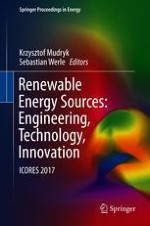2018 | OriginalPaper | Chapter
Analysis of the Potential of Methane Emission and Energy Power from Excrement of Livestock in Poland
Authors : Weronika Gracz, Wojciech Golimowski, Krystian Butlewski, Damian Marcinkowski
Published in: Renewable Energy Sources: Engineering, Technology, Innovation
Publisher: Springer International Publishing
Activate our intelligent search to find suitable subject content or patents.
Select sections of text to find matching patents with Artificial Intelligence. powered by
Select sections of text to find additional relevant content using AI-assisted search. powered by
